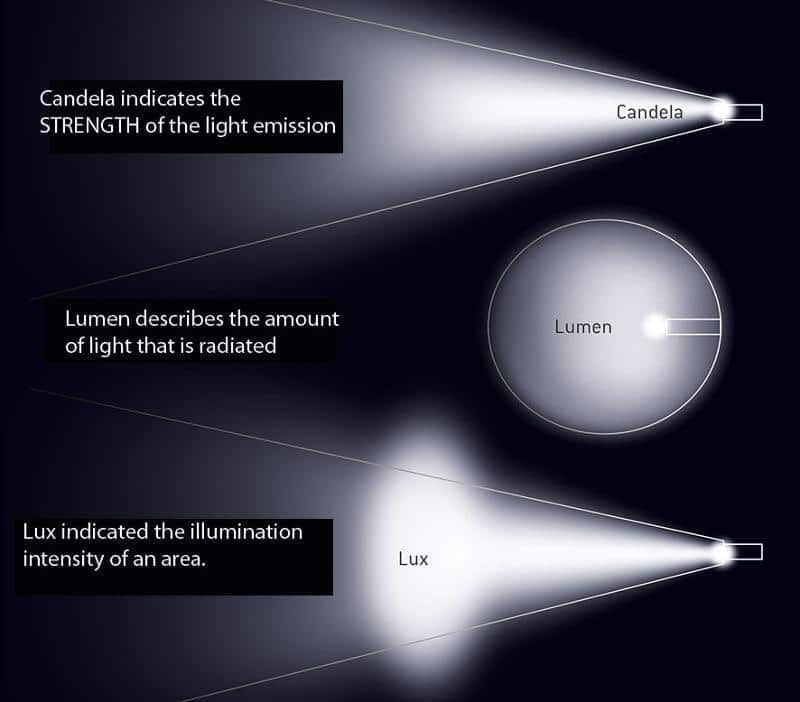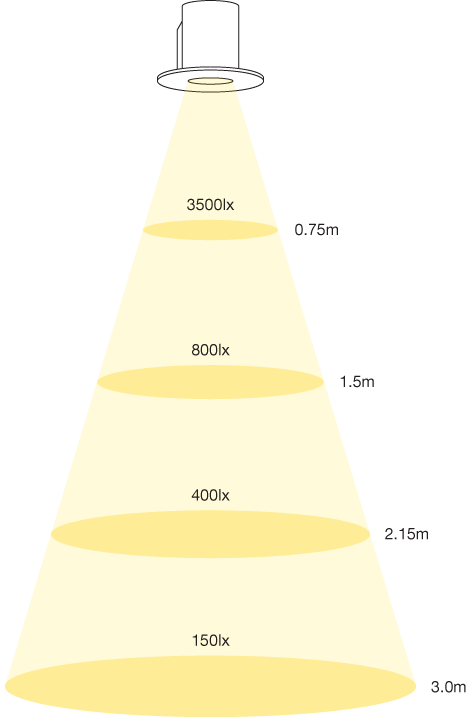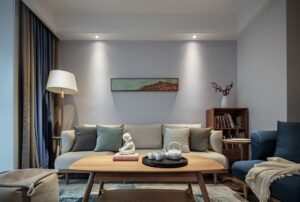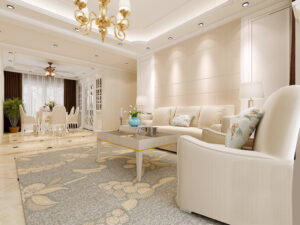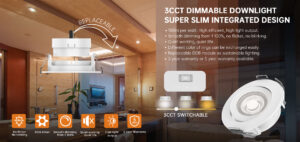Lighting plays a crucial role in shaping our environments, affecting everything from visual comfort to productivity and energy efficiency. When selecting or designing lighting solutions, understanding the fundamental metrics that describe light output and intensity is essential.
Two of the most important measurements in lighting are lumens and lux. While often used interchangeably in casual conversation, these terms represent distinct concepts that influence how we perceive and quantify light in various settings. This article offers a detailed exploration of lumen and lux, clarifying their differences, applications, and relevance to lighting design, especially within European markets.
Illuminating the Basics Why Understanding Lumens and Lux is Essential
Effective lighting design hinges on a clear understanding of light measurement. The specific lighting requirements vary significantly depending on the intended task and the surrounding environment. Insufficient light can lead to eye strain, fatigue, and decreased productivity, while excessive brightness can cause glare, discomfort, and wasted energy.
By grasping the principles behind lumens and lux, you can strategically select and position light fixtures to provide optimal illumination tailored to your specific needs. This knowledge is crucial not only for achieving the desired aesthetic but also for promoting well-being, enhancing productivity, and maximizing energy efficiency—all vital considerations for modern lighting solutions in European homes and businesses.
Radians Lighting is committed to empowering customers with the knowledge to make informed decisions, ensuring that every lighting installation contributes to a comfortable, efficient, and visually appealing space.
Lumen Measuring the Total Light Output
Understanding Lumen and Its Significance
A lumen (lm) is the standard unit for measuring the total quantity of visible light emitted by a light source. Specifically, it quantifies the luminous flux, representing the total amount of light radiating in all directions from a bulb, fixture, or lamp.
Think of lumens as the overall “brightness” of a light source, indicating how much light it produces, regardless of where that light is directed or how it is ultimately used. It’s a measure of the source’s power to emit light.
The Role of Lumens in Selecting Light Sources
When selecting light bulbs or fixtures, the lumen rating serves as your primary indicator of overall brightness. For example, when choosing an LED downlight for your kitchen, focusing on the total lumens ensures sufficient illumination for cooking and other tasks. Historically, consumers relied on wattage to estimate brightness, but with the emergence of energy-efficient lighting technologies like LEDs, lumens offer a far more accurate basis for comparison.
A lower-wattage LED bulb can often produce the same or even more lumens than a higher-wattage incandescent bulb. Therefore, lumens provide a direct measure of light output, allowing for informed decisions based on actual brightness rather than power consumption. Radians Lighting provides clear lumen ratings for all our products, empowering you to choose the most efficient and effective lighting solutions for your specific requirements.
Lumen Efficacy Gauging Energy Efficiency
Lumen efficacy, expressed as lumens per watt (lm/W), is a critical metric for evaluating the energy efficiency of a light source. It indicates how effectively the light source converts electrical power into visible light. Higher lumen-per-watt values signify greater energy efficiency, meaning more light is produced for each unit of energy consumed.
LEDs generally exhibit significantly higher lumen efficacy compared to traditional incandescent or halogen bulbs. For example, a high-quality LED downlight from Radians Lighting can achieve 100 lumens per watt or higher, while an incandescent bulb might only produce 10-15 lumens per watt. This difference translates to substantial energy savings over the bulb’s lifespan.
In European markets, where energy costs are often higher and environmental concerns are prominent, lumen efficacy is a particularly important consideration for consumers and businesses seeking to minimize their carbon footprint and reduce operating expenses.
Key Differences Between Lumens and Lux
| Feature | Lumen | Lux |
|---|---|---|
| Measurement | Total light output from a light source | Light intensity on a surface |
| Focus | Source brightness | Surface illumination |
| Unit | Lumens (lm) | Lux (lx) = Lumens per square meter (lm/m²) |
| Distance Impact | Remains constant regardless of distance | Decreases with increasing distance |
| Application | Comparing brightness of light sources | Determining suitability for tasks |
| Measurement Tools | Integrating spheres, gonioscopes | Lux meters, smartphone apps |
Understanding the Interplay It’s crucial to recognize that lumens and lux are related but distinct concepts. Lumens represent the total light emitted, while lux represents the concentration of that light on a surface. A light source with a high lumen output may not necessarily result in high lux levels if the light is spread over a large area. Conversely, a focused light source with a lower lumen output can achieve high lux levels on a small area. The relationship between lumens, lux, and area is essential for effective lighting design.
Calculating Lux Levels A Practical Approach
The Formula for Calculating Lux
The relationship between lumens, lux, and area is defined by the following formula:
Lux (lx) = Lumens (lm) / Area (m²)
This formula can be rearranged to calculate the required lumens for a desired lux level:
Lumens (lm) = Lux (lx) × Area (m²)
Practical Examples of Lux Calculations
- Office Lighting If a European office space of 30 square meters requires an average illuminance of 500 lux for general tasks, the total required lumens would be 15,000 lumens (500 lx * 30 m²). This could be achieved using multiple LED downlights strategically positioned throughout the space.
- Home Reading Nook For a reading nook with an area of 4 square meters, requiring 800 lux for comfortable reading, a lamp emitting 3,200 lumens would be necessary (800 lx * 4 m²). A focused task lamp would be ideal for this application.
- Classroom Lighting Classrooms in many European countries have regulated lux levels to ensure adequate visibility for students. If a classroom of 50 square meters requires 300 lux, the total lumen requirement is 15,000 lumens. Radians Lighting offers specialized classroom LED lights designed to meet these standards.
Lux Measuring Light Intensity on a Surface
Defining Lux and Its Significance
Lux (lx) is the unit of measurement for illuminance, quantifying the amount of light falling on a specific surface area. Specifically, one lux is equal to one lumen per square meter (1 lx = 1 lm/m²). Unlike lumens, which measure the total light output, lux takes into account both the total light output (lumens) and the area over which that light is distributed. Therefore, lux provides a measure of how brightly a surface is illuminated, reflecting the actual light experienced in a particular location.
The Importance of Lux in Lighting Design and Planning
Lux is a critical factor in lighting design because it directly relates to how well we can see and perform tasks in a given space. Different activities require different lux levels to ensure optimal visibility and comfort. For example, detailed tasks such as reading, writing, or intricate assembly require higher lux levels to ensure adequate visibility and minimize eye strain.
General ambient lighting, on the other hand, may require lower lux levels to create a more relaxed atmosphere. Understanding the required lux levels for different tasks and environments is crucial for creating lighting designs that enhance productivity, promote well-being, and reduce the risk of accidents. Radians Lighting provides detailed specifications for our products, including lux levels at various distances, to assist you in planning effective lighting solutions.
Practical Applications of Lux Measurement and European Standards
Lux measurements are essential to ensure that spaces are adequately lit for their intended purposes, complying with safety standards and ergonomic recommendations.
Many European countries have specific lighting requirements for workplaces, schools, and public spaces, often specified in lux levels. These standards are designed to protect the health and safety of individuals by ensuring adequate visibility for various activities. For example, the EN 12464-1 standard specifies illuminance requirements for various tasks performed in office environments across Europe.
Lux meters or smartphone apps can be used to measure illuminance levels on-site, allowing lighting professionals to fine-tune lighting designs and ensure compliance with relevant regulations. Compliance with these standards is not only a legal requirement but also a responsible practice that contributes to a more comfortable, productive, and safe environment.
Real-World Examples and Applications in European Markets
Office Lighting Standards in Europe EN 12464-1
Many European countries adhere to EN 12464-1, the European standard for lighting of work places. This standard specifies illuminance requirements for various tasks performed in office environments.
For example, general office areas typically require around 500 lux, while tasks involving detailed work may require 750 lux or more. Understanding these standards is crucial for ensuring compliance and creating a comfortable and productive work environment. Factors like monitor glare, workstation layout, and the age of employees also influence ideal lux levels.
Home Lighting Design Considerations in Europe
In European homes, lighting design often focuses on creating a balance between functionality and ambiance, often reflecting the principles of “hygge” in Scandinavian countries or similar concepts emphasizing comfort and well-being.
Living rooms may require lower lux levels for relaxation and social activities, while kitchens and bathrooms typically require higher lux levels for tasks like cooking and grooming. The use of dimmable downlights and smart lighting systems is becoming increasingly popular, allowing users to adjust the light levels to suit their needs and preferences, enhancing both convenience and energy efficiency.
Lighting Solutions for Educational Facilities
Schools and universities across Europe must adhere to strict lighting standards to ensure a safe and conducive learning environment. Adequate lighting is essential for student concentration, visual comfort, and overall well-being. The specific lux requirements vary depending on the task and area within the educational facility.
Classrooms, laboratories, and libraries all have different lighting needs that must be addressed to promote effective learning. Studies have shown that proper lighting can significantly improve student performance and reduce eye strain and fatigue. Radians Lighting offers specialized classroom LED lights designed to meet these standards, providing optimal illumination for various learning environments.
The Future of Lighting Innovations and Emerging Trends
Embracing Smart Lighting Systems for Enhanced Control and Efficiency
Smart lighting systems are revolutionizing the way we control and interact with light. These systems allow users to adjust brightness, color temperature, and even light direction using smartphone apps or voice commands. Smart lighting can enhance convenience, improve energy efficiency, and create dynamic lighting scenes for various activities, adapting to different needs throughout the day. Several European companies are at the forefront of smart lighting technology, offering innovative solutions for both residential and commercial applications.
Radians Lighting offers a variety of smart light options, allowing you to create personalized lighting experiences. For example, automated lighting schedules can reduce energy consumption by turning off lights when they are not needed, while tunable white lighting can mimic natural daylight patterns, promoting well-being and productivity.
Prioritizing Human-Centric Lighting for Health and Well-being
Human-centric lighting (HCL) is an emerging field that focuses on the impact of light on human health and well-being. HCL systems mimic natural daylight patterns, providing dynamic lighting that supports the body’s circadian rhythm. This can improve sleep quality, boost mood, and enhance cognitive performance.
By adjusting color temperature and intensity throughout the day, HCL systems can help regulate hormone production, improve alertness, and reduce the negative effects of artificial light. As research in HCL continues, we can expect to see more sophisticated lighting solutions that prioritize human health and well-being, integrating seamlessly into our daily lives.
The Continued Evolution of LED Technology Efficiency and Sustainability
LED technology continues to advance, with ongoing improvements in lumen efficacy, color rendering, and lifespan. New LED products are constantly being developed to meet the evolving needs of consumers and businesses. For example, advancements in materials science and manufacturing processes are leading to more efficient and durable LEDs, reducing the need for frequent replacements.
As LEDs become even more efficient and affordable, they will continue to replace traditional lighting technologies, driving further energy savings and environmental benefits. Radians Lighting is committed to staying at the forefront of LED technology, offering innovative and sustainable lighting solutions that minimize environmental impact and maximize energy efficiency.
Choosing the Right Lighting Solutions A Step-by-Step Guide
Determining the Right Lumens for Your Space
The required lumens for a space depend on several factors, including the size of the room, the color of the walls and ceilings, and the intended use of the space. Lighter colors reflect more light, reducing the need for higher lumen outputs. As a general guideline, use the following as a starting point:
- Living Rooms 10-20 lumens per square foot (100-200 lux)
- Bedrooms 5-10 lumens per square foot (50-100 lux)
- Kitchens 30-40 lumens per square foot (300-400 lux)
- Bathrooms 70-80 lumens per square foot (750-850 lux)
- Offices 30-50 lumens per square foot (300-500 lux)
Understanding Color Temperature (Kelvin) and its Impact
In addition to lumens and lux, color temperature is another important factor to consider when selecting lighting. Color temperature, measured in Kelvin (K), describes the warmth or coolness of the light emitted by a bulb.
Lower Kelvin values (2700K-3000K) produce warm, yellow light, ideal for creating a cozy atmosphere in living rooms and bedrooms. These warmer tones are often preferred in European homes for their inviting and relaxing qualities.
Higher Kelvin values (4000K-5000K) produce cool, white light, suitable for task lighting in kitchens, offices, and bathrooms, promoting alertness and focus. Choosing the right color temperature can significantly impact the mood and functionality of a space, aligning with the principles of human-centric lighting design.
Optimizing Light Distribution with Different Fixture Types
The type of light fixture and its distribution pattern also play a significant role in achieving the desired lux levels and creating a visually appealing environment. Downlights provide focused, direct light, ideal for task lighting and highlighting specific areas.
Recessed downlights offer a clean, minimalist look, while surface-mounted downlights are easier to install in existing spaces.
Track lights offer flexibility in directing light to specific areas, making them suitable for accent lighting and highlighting artwork.
Wall lights can provide ambient lighting and add decorative accents, enhancing the overall aesthetic of a room.
Outdoor wall lights improve security and enhance curb appeal. The choice of fixture should be based on the intended use of the space, the desired aesthetic, and the need for specific lighting effects.
Conclusion
Understanding the distinction between lumens and lux is fundamental for effective lighting design and selection. Lumens quantify the total light output from a source, while lux measures the illuminance on a surface, reflecting how bright an area appears. This knowledge is critical for complying with European lighting standards, enhancing visual comfort, and optimizing energy use.
Radians Lighting exemplifies excellence in LED lighting, offering a broad range of customizable, high-quality products designed to meet the diverse needs of European customers. Their commitment to innovation, quality control, and customer service makes them a trusted partner for lighting projects requiring precise lumen and lux considerations.
By applying these lighting metrics thoughtfully, designers, architects, and consumers can create environments that are not only well-lit but also energy-efficient and visually comfortable, aligning with the latest industry standards and user expectations in 2025.
For more information on Radians Lighting’s product range and technical specifications, visit their official website at Radians Lighting. For detailed European lighting standards, consult the official BS EN 12464-1 documentation available through accredited standards organizations.

